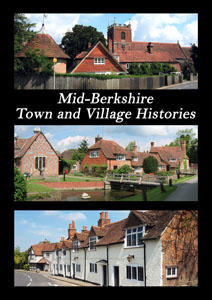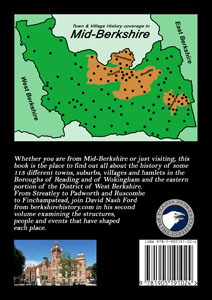 |
 |
||||||||
|
|
Shinfield Shinfield is a controversial Anglo-Saxon place-name, said by some to mean the Selingas' Field, the Selingas being an Anglo-Saxon tribe named after Chief Sela. Most versions of the name are variations of Shinningfield. It may mean the Scieningas' Field, named after a different chieftain called Sciene. However, popular local etymology suggests the name derives from the Shining Fields where the River Loddon still floods today on the Arborfield border. The village's entry in the Domesday Book (1086) is rather interesting as it includes a mill and an extraordinary 5 fisheries producing 550 eels per year, also 16 acres of meadow (presumably down by the Loddon) and woodland to support some 90 pigs in winter; but the number of hides available for agriculture had been reduced from five to nothing. This suggests that all the residents were engaged in animal husbandry and at the fisheries. The parish covers a number of outlying hamlets: Shinfield Rise, Spencers Wood, Three Mile Cross, Poundgreen, Ryeish Green, Grazeley, Diddenham and the Hartleys. However, Shinfield proper is the area around the parish church. This church was first built in 1069. Whilst hunting in the woods at Shinfield with King King Edward I in 1275, it is said that Bishop (later Saint) Thomas Cantilupe, the Chancellor of England, who sometimes resided at Whiteknights Park, took the opportunity to bemoan the sorrowful state of his Hereford Diocese which was burdened with the building of a new cathedral. The King suggested that he take the tithes from Shinfield Church to help. Later, during the Civil War, the tower of the church was badly damaged by cannon fire when a group of royalist soldiers, retreating from the Siege of Reading, took refuge in it. The parliamentarians surrounded the church and blasted the men out of the sky. Settlement later expanded southwards from the parish church, with a concentration of housing at School Green, the southern part of the village, after the handsome infants' school was built there in 1707 by Richard Piggot, a local boy made good. Tudor residents of note were Queen Elizabeth I's Chief Physician, Robert Huick, and his grandson, Sir Simeon Steward, the poet. The old moated Tudor manor house stood north of the motorway in Shinfield Rise. In 1786, however, Shinfield manor was purchased by Alexander Cobham, a judge in India. In 1802, he pulled down the old house and moved to the old Rectory next to the church, which became known as Shinfield Manor. When he died in 1810, this passed to his grand-nephew, Alexander Cobham Martyr. He lived there before moving to a house in Cutbush Lane which he called Shinfield House before changing it again to Shinfield Grange when he greatly enlarged. Upon his death in 1902, his eldest son moved back the old Rectory or Manor House beside the church and his younger brother took on the Grange. In 1920, the Cobhams sold up and, until 1985, the Manor House was the home of the National Institute for Research in Dairying. It later fell into ruin and was pulled down a few years ago. Shinfield features twice in the works of Thomas Hardy, who called it Gaymead. Its principal appearance was as the setting for 'The Son's Veto'
from 'Life's Little Ironies'. Sophy, the chief character, even married the local rector in the church there. Later, Hardy wrote of Jude the Obscure working as a decorator in a church
near Gaymead, though its exact location is uncertain, perhaps Arborfield. In Shinfield Church are buried the parents of another author, Mary
Russell Mitford, who lived at Poundgreen and Three Mile Cross.
Read more history of Shinfield and other nearby settlements, like Spencers Wood and Three Mile Cross, in David Nash Ford's book, 'Mid-Berkshire Town and Village Histories'.
Click to Order direct from the Author.
Whether you are
from Mid-Berkshire or just visiting, this book is the place to find
out all about the history of some 113 different towns, suburbs,
villages and hamlets in the Boroughs of Reading and of Wokingham and the eastern portion of the District of West Berkshire.
From Streatley to Padworth and Ruscombe to Finchampstead,
join David Nash Ford from
berkshirehistory.com in his second volume examining the structures, people and events
that have shaped each place. Some of these histories were first
published in part here on this website, but they have all been
considerably expanded and are joined by many new histories of places
often missed by historians, including those which only joined
Berkshire in 1911 or later. Click
for full details and purchase options. |
||||||||
| © Nash Ford Publishing 2001; Revised 2015 & 2020. All Rights Reserved. | |||||||||





